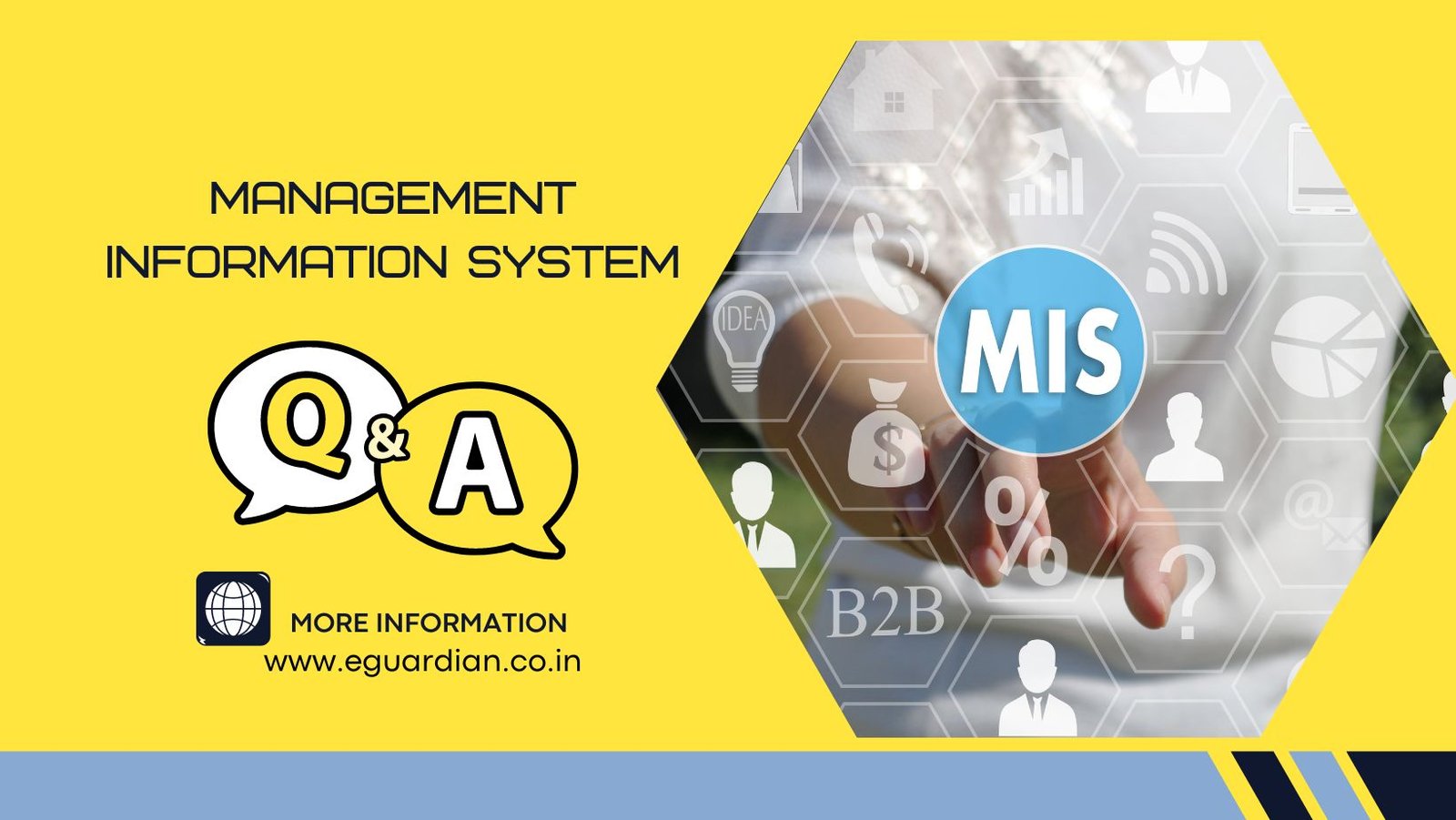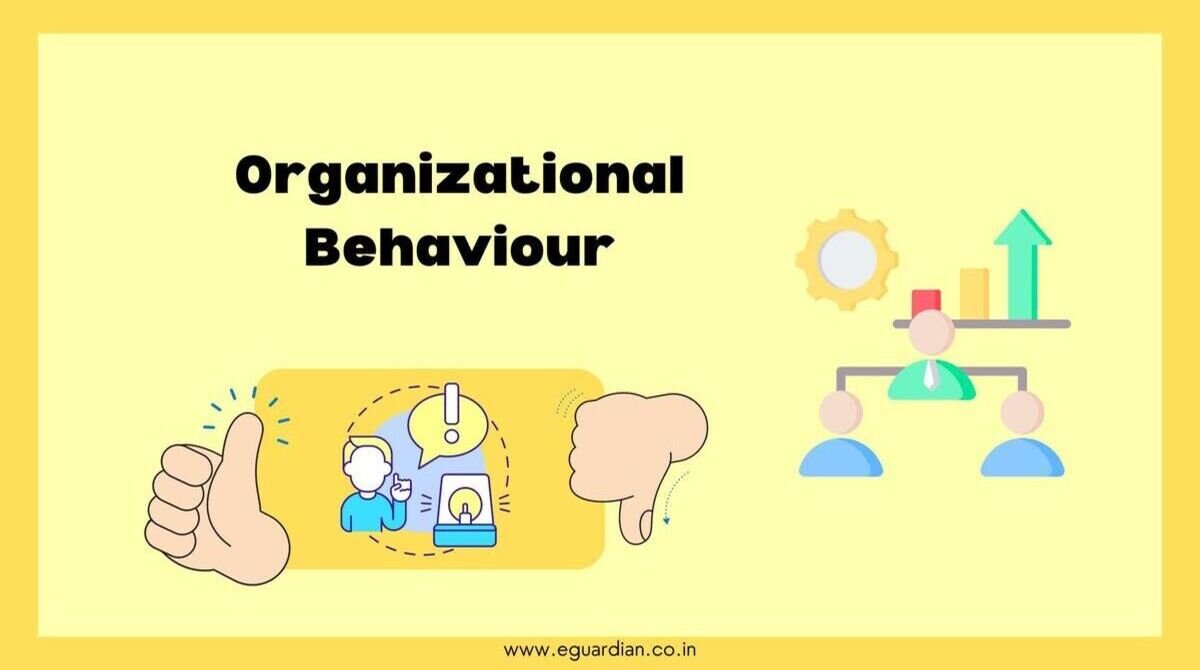Management Information System (MIS) MCQ questions and answers pdf download for MBA distance and regular exams of various Institutes.
Searching for Management Information System (MIS) MCQ questions and answers? Look no further! This article is designed to provide you with a comprehensive guide on MIS MCQ questions.
We will cover topics such as the definition of MIS, key components of MIS, advantages and disadvantages, and more.
With this information, you’ll be well-prepared to answer any question that might arise on the topic of Management Information System (MIS).
Management Information System (MIS) MCQs
1. ___ is an organized portfolio of formal systems for obtaining processing and delivering information in support of the business operations and management of an organization.
a. MIS
b. DSS
c. MRS
d. None of the above
Ans. A
2. ___ expressly designed for the support of individual and collective decision-making.
a. MIS
b. DSS
c. TPS
d. OIS
Ans. B
3. ___ are formal social units devoted to the attainment of specific goals.
a. Management
b. Organization
c. Decision support system
d. None of these
Ans. B
4. Economic signals that measure and predict the direction of the economy provide information about the economic climate.
a. True
b. False
Ans. A
5. The cost of information can be ___.
a. Costly
b. Valuable
c. Processing
d. None of the above
Ans. B
6. ___ technology includes computers hardware, software, database management systems, and data communication system.
a. Information
b. Computer
c. Marketing
d. All of the above
Ans. A
7. Diagnosis of information needs can occur at the individual managerial or organizational levels.
a. True
b. False
Ans. A
8. Sociological approaches help us understand the organizational behavior of people.
a. True
b. False
Ans. A
9. Management, science, also known as ___, is a field of applied mathematics.
a. Operations research
b. Management accounting
c. Exchange commission
d. System theory
Ans. A
10. Mass production of computers started in ___ when UNIVAC 1 was delivered.
a. 1951
b. 1953
c. 1946
d. 1954
Ans. A
11. Executive managers establish the overall direction of an organization by setting its strategy and policies.
a. True
b. False
Ans. A
12. ___ can occur at the individual, group, organizational or extra-organizational level.
a. Planning
b. Controlling
c. Organizing
d. Scheduling
Ans. A
13. Tactical plans may focus on decisions staffing, advertising, and pricing.
a. True
b. False
Ans. A
14. ___ ensuring that performance meets established standards that worker’s activities occur as planned and that the organization process.
a. Controlling
b. Planning
c. Leading
d. Organizing
Ans. A
15. ___ is the process of recording, classifying, and summarizing the financial activities of an organization.
a. Planning
b. Managerial
c. Accounting
d. Diagnosis
Ans. C
16. Humans and computers are ___ in their ability to filter and save information.
a. Similar
b. Different
c. Complementary
d. None of the above
Ans. C
17. EDI is an example of ___.
a. Decision-making
b. Boundary system
c. Coordination
d. Modeling
Ans. B
18. Telecommunications means multiple computers interconnected into networks is called ___.
a. Distributed database
b. Distributed processing
c. Central processing
d. None of the above
Ans. B
19. Newspaper, magazine, radio, television are examples of ___.
a. Storing information
b. Retrieving information
c. Communication information
d. Acquiring information
Ans. d
20. MRS stands for ___.
a. Management reporting system
b. Management resource system
c. Management retrieves system
d. None of the above
Ans. A
21. EIS should offer the capability to ___into the data.
a. Drill down
b. Drill up
c. Drill diagonal
d. All of the above
Ans. A
22. A ___ strategy seeks to achieve competitive advantages by allowing the business unit to make more profit than its competitors.
a. Focus
b. Cost leadership
c. Linkage
d. Information leadership
Ans. B
23. Security means protection against theft, manipulation, and loss of data.
a. True
b. False
Ans. A
24. EMS stands for the enterprise management system.
a. True
b. False
Ans. A
25. ___ is a feature provided for ensuring that the transaction is completed with regard to the business rules set by the management.
a. Advocacy
b. Authorization
c. Signature
d. Policy formulation
Ans. B
26. The architecture of the MIS plan provides:
a. A way to handle the system or subsystem by way of simplificatio0n, coupling, and decoupling of subsystems.
b. For preparing the schedule of the system in the overall information requirement
c. Online information on the stocks markets and the accounts balance
d. None of these
Ans. A
27. Michael hammer defines re-engineer as ___ and radical redesign of business process to achieve the performance such as cost, quality, service, and speed.
a. Business process
b. The fundamental rethinking
c. Organization restructuring
d. None of the above
Ans. b
28. The ___ calls for trimming and chopping of these designs so that the cost is reduced, service is improved and the customer gets the higher value at a higher speed.
a. Business process
b. Radical redesign
c. The fundamental rethinking
d. None of these
Ans. B
29. Re-reengineering calls for a change in the performance measures:- the cost, quality, efficiency, overheads, and many others.
a. True
b. False
Ans. A
30. A ___ process in any area of the business organization performs basic steps such as, receive input, measuring, analyzing, documenting, performing, process, record/storing, access, produce, and communicating.
a. Value
b. Decision making
c. Business
d. Re-engineering
Ans. C
31. A ___ is a measure, an intangible measure, which is difficult to count in clear terms.
a. Model
b. Business
c. Value
d. Organization
Ans. C
32. The business re-engineering requires a major change in the ___.
a. Machine
b. Mindset
c. Material
d. Infrastructure
Ans. B
33. The number of steps in any business process related to the data search, its matching, collecting, validating, confirming, and conforming are carried out in the redesigned process.
a. True
b. False
Ans. A
34. ___ is the process of identifying a problem, developing alternative solutions, and choosing and implementing.
a. Decision-making
b. Business
c. Value
d. Re-engineering
Ans. A
35. Decision-making is a ___ activity.
a. Intuitive
b. Cognitive
c. Systematic
d. Analytic
Ans. b
36. A ___ decision maker approaches a problem by structuring it and applying a well-defined method to lead to a solution.
a. Intuitive
b. Systematic
c. Cognitive
d. All the above
Ans. B
37. ___ systems are interactive information systems that assist a decision-maker in approaching ill-structured problems by offering analytical models and access to database.
a. Decision making
b. Systematic
c. Cognitive
d. Decision support systems
Ans. d
38. The components of DSS –
a. Data management subsystems
b. Model management sub-system
c. Dialog management sub-system
d. All of the above
Ans. D
39. ___ systems help to analyze historical and current data either on-demand or periodically.
a. Data access system
b. Data analysis system
c. Fore cast-oriented data analysis system
d. System based on accounting models
Ans. B
40. A ___ is the actual system that a manager works with during the decision process.
a. Specific DSS
b. DSS generators
c. DSS tools
d. None of the above
Ans. A
41. True or False –
a. Formal sources provide information in a less structured way.
b. Informal sources provide information in a relatively organized and predictable fashion.
A. a & b true
B. a & b False
C. a – true, b – false
D. b – true, a – false
Ans. B
42. ___ processing involves duplicating, sorting, and filling data.
___ processing with electronic scanners involves transforming and entering the data into an electronic form.
a. Manual, electronic
b. Electronic, manual
c. Transforming
d. None of the above
Ans. a
43. ___, ___, and society need to use a variety of systems to organize the collection, storage, processing, retrieval, and communication of information.
a. Management, society
b. Communicating, organizations
c. Individuals, organizations
d. None of these
Ans. C
44. MIS is both an area of ___ and a ___ of scholarly inquiry.
a. Design, diagnosis
b. Practice, discipline
c. Evaluation, implementation
d. None of these
Ans. A
45. The first electronic computer, ___ was completed in 1946 at the university of ___.
a. ENIAC, Pennsylvania
b. UNIVAC, Pennsylvania
c. ENIAC, Charles Babbage
d. None of the above
Ans. A
46. True or False –
a. At the highest level, managers are concerned with supervising the conduct of day-to-day activities.
b. At the lowest level, managers are concerned with setting long-term goals and directions for the organization.
A. Both are true
B. Both are false ‘
C. A – true, b-false
D. A – false, b – true
Ans. B
47. ___ managers who act as project managers might be responsible for one or more unique protects and ___ managers supervise teams of workers who must accomplish a specific goal.
a. Middle, project
b. Project, middle
c. Top, middle
d. Top, project
Ans. A
48. ___ refers to taking actions that direct and motivate employees to accomplish personal and organizational goals.
___ establishing a formal reporting structure and a system of accountability among workers.
a. Organizing, leading
b. Planning, controlling
c. Leading, organizing
d. None of the above
Ans. C
49. Operations can encompass ___.
a. Only manufacturing
b. Manufacturing and the provision of services
c. Services only
d. Nonprofit organizations
Ans. B
50. ___ refers to the deployment, development, assessment, rewarding, and management of individual organizational members and worker groups.
___is the management of raw materials, partially completed goods service.
a. Inventory control, HRM
b. Human resource management, Inventory control
c. Capacity planning, Human resource planning
d. None of the above
Ans. B
Conclusion
Management information systems are a key part of any business’s success. Being knowledgeable in this area can help you stay ahead of the competition and make sound decisions.
We hope these questions have helped expand your knowledge on MIS and give you the confidence needed to succeed.
Thanks for reading the post on Management Information System (MIS) MCQ questions and answers, if you like the post please share it on social media.
Read more:





Thank you, keep up the good work
Hi,
I intend to contribute a guest post to your website that will help you get good traffic as well as interest your readers.
Shall I send you the topics then?
Best,
Rose Emilie